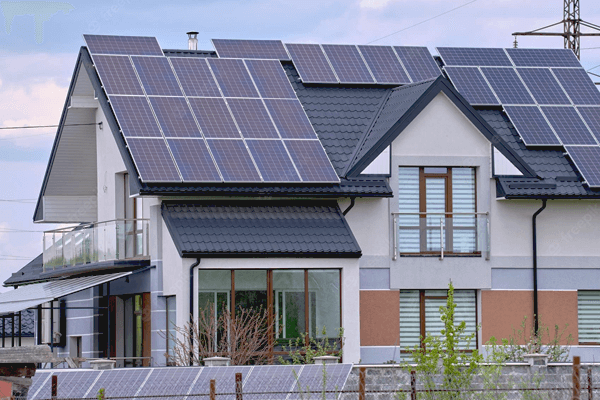Renewable energy is finally getting its well-deserved growth explosion. After its 45 percent growth boom in 2020, it’s expected to grow 8 percent further in 2022, according to the International Energy Agency. Renewable is widely regarded to be the future of energy, thanks to its future-proof nature, minimal to no carbon emissions, and other advantages such as lower risk of electrical fire hazards.
However, our energy needs grow ever larger as well, and some significant advancements will be needed to meet them. Here are some rising trends that can shape the energy infrastructure into the form we need to finally achieve full energy sustainability.

The Advent of Green Hydrogen Fuel
The revolutionary potential of hydrogen as an energy source cannot be understated. After all, it is the most abundant element in the entire universe. The problem lies in the fact that to get usable hydrogen with traditional technology, you still have to use fossil fuels. But a new initiative from the EU is poised to change all that.
Advancements in technology have made separating pure hydrogen from water much easier and more efficient. With renewable energy sources providing the requisite power, we are now able to synthesize hydrogen virtually carbon-free. This green hydrogen, as opposed to brown hydrogen from coal and gray hydrogen from natural gas, can help us meet the rising global demand for power. And while it won’t quite give us limitless energy in the near future, once we master this tech, we may be able to generate green hydrogen at smaller scales, even on the residential level. This can offer individual homeowners a significant amount of energy autonomy.
Energy Decentralization and Alternate Energy Providers
As tech becomes more available, the hurdles to energy generation become much easier to surmount as well. On the national scale, this allows governments to build multiple smaller power plants scattered throughout the map. This decreases the distance over which power has to be transmitted, decreasing costs and energy loss.
What’s more exciting however are the implications this has for individuals and cooperatives. Microgeneration, which is the official term for smaller-scale electricity generation, is expected to be on the rise once equipment and new methods become more available to the average consumer. Governments are already starting to encourage microgeneration with incentives for generating solar power and the like. Homeowners moving towards energy independence, either as individuals or as groups, ease the burden on power grids, making traditional energy cheaper and the world’s carbon footprint that much smaller. We’re also seeing a significant push from the private sector offering consumers alternative energy sources without having to invest in equipment themselves.
Geothermal Energy Microgrids
In the present day, we have a vast array of renewable energy sources at our disposal. Why, then, is going fully green energy so difficult? The biggest reasons for this are inefficiency and lack of reliability. Although solar and wind power generation have gotten much more sophisticated through the years, these sources still need a hefty investment of time and material to generate enough energy for our needs. And all that for renewable energy that fluctuates in yield depending on weather.
Contrast that with geothermal energy. The energy that comes from within the earth outputs steadily compared to other renewable sources, even more consistently than hydropower. And harnessed correctly, it has far greater yield potential than most of the other sources. The geothermal gradient makes it so that if one can dig deep enough into the earth, one can access consistent temperatures to draw power from using steam turbines or other means. While we are still quite far from being able to build a miniature geothermal plant in our backyards, geothermal microgrids built by local government units or residential cooperatives are rising in popularity, thanks to their reliability and ready availability.
Judging by these growing trends, the future of energy autonomy for individual residences and residential cooperatives seems bright. New options for setting up one’s own power generation facilities will take some time to mature, but we’re already seeing the beginnings of better residential energy production equipment in the form of hybrid systems and hydrogen generators. And the best part is these are only some of the initiatives that are working to make renewable energy more widespread. Biofuel, tidal energy, and nuclear are growing every day as well.
